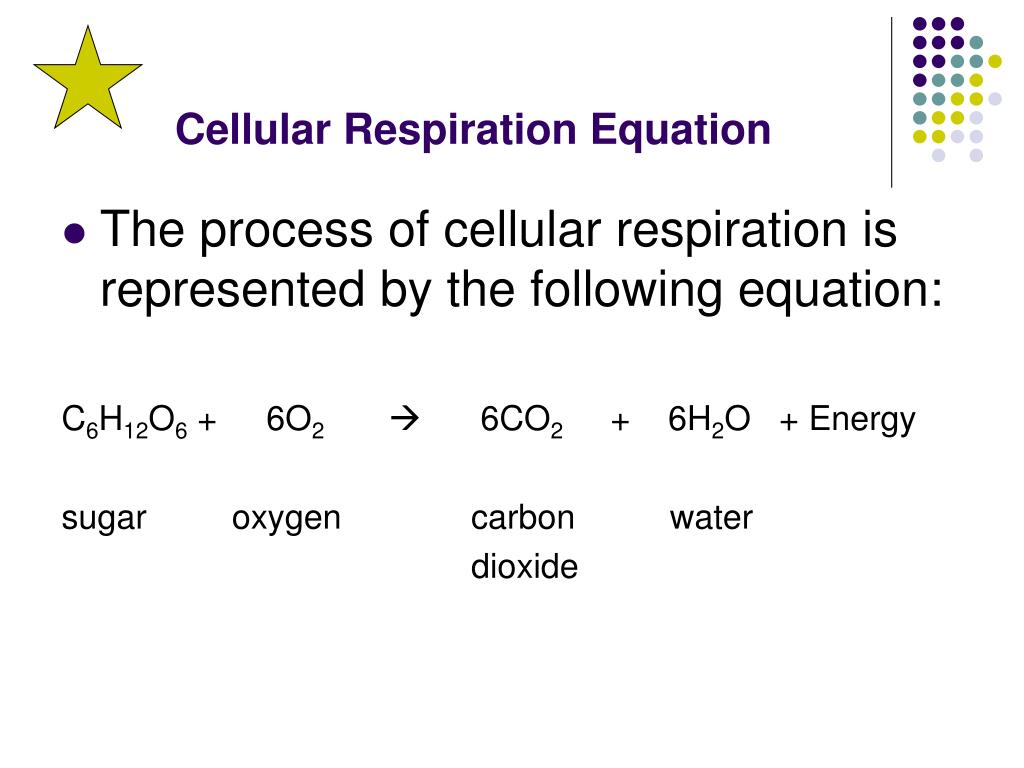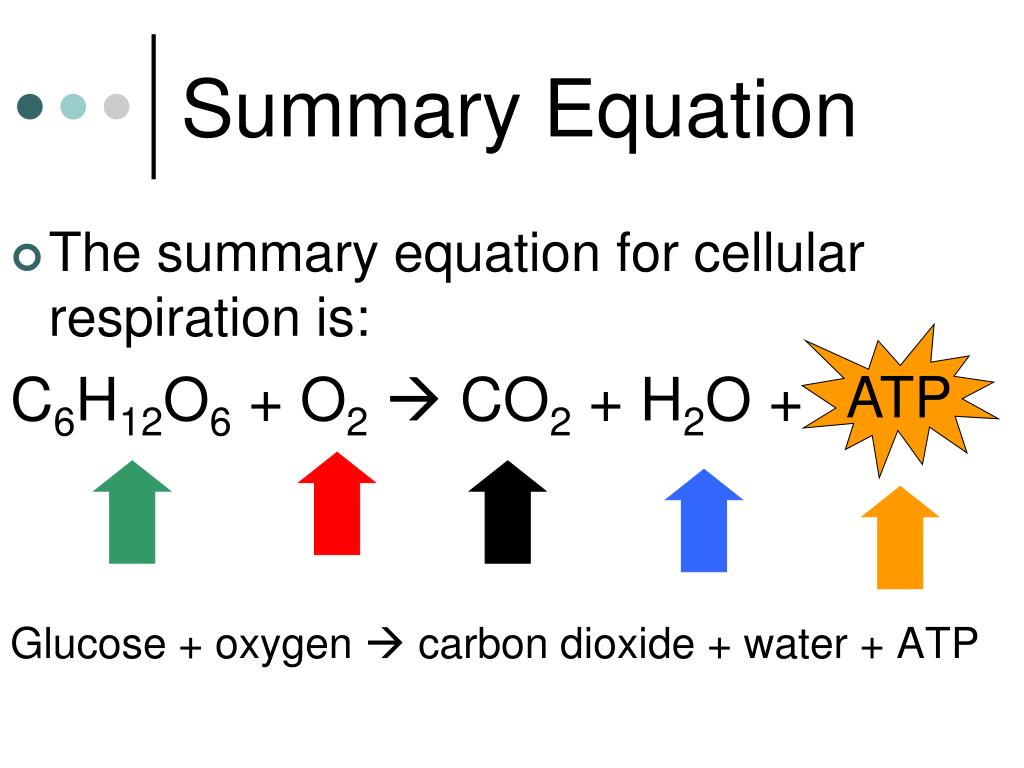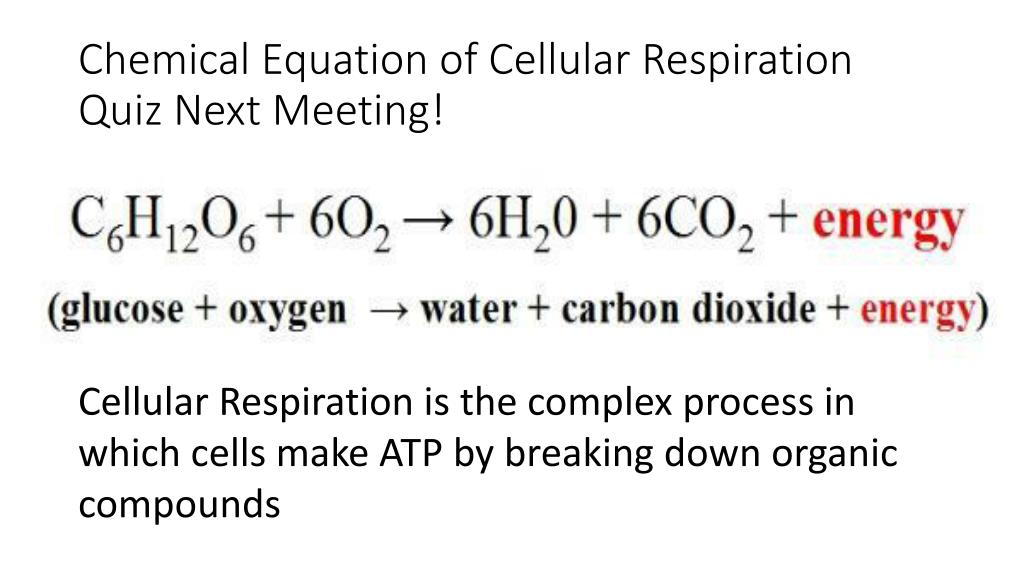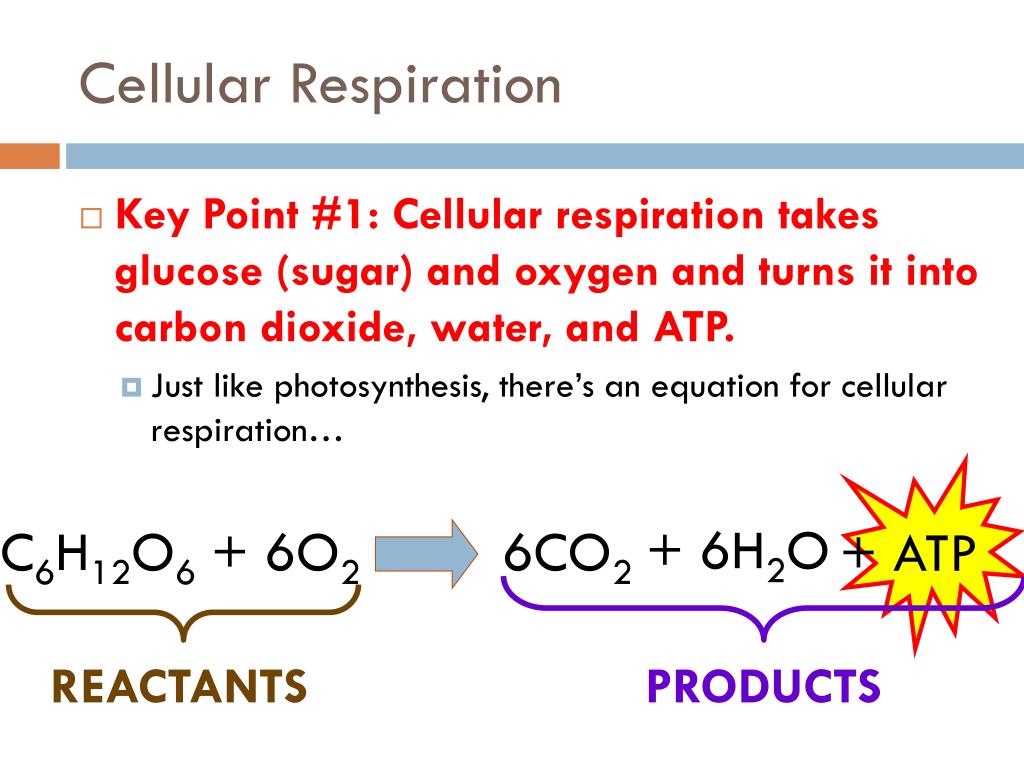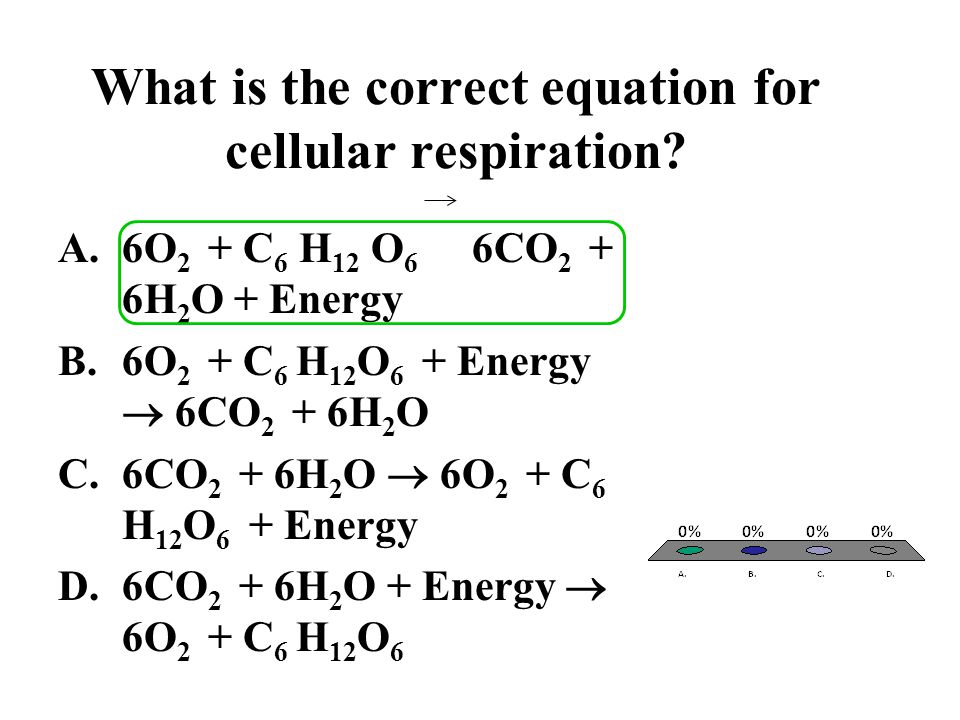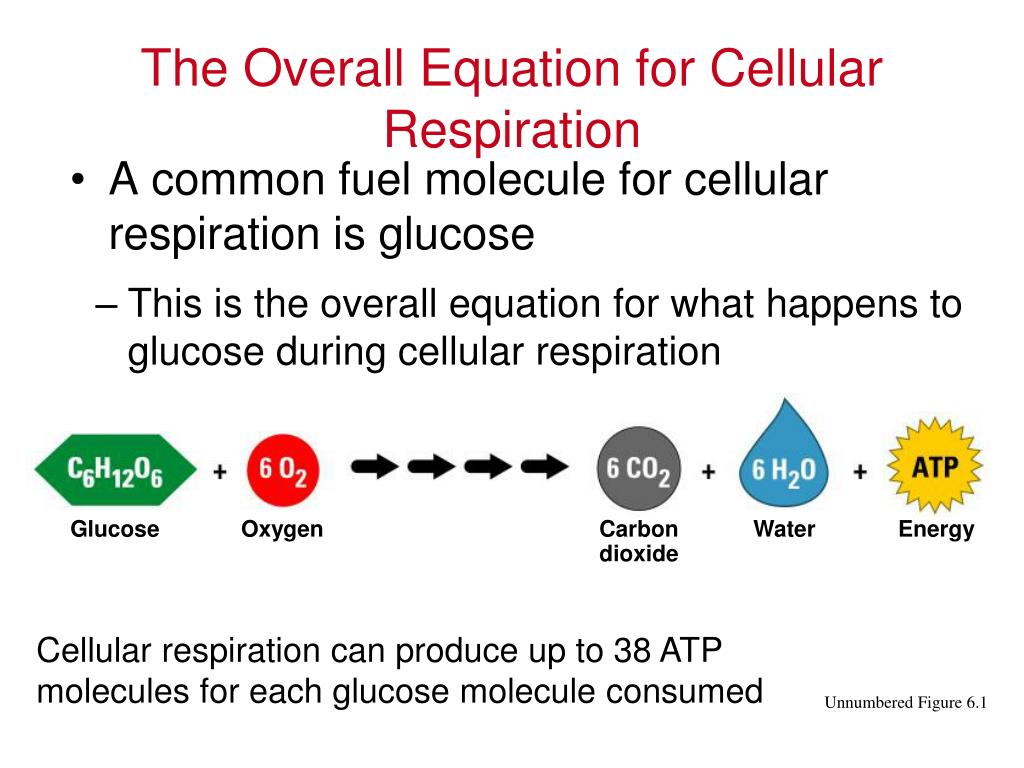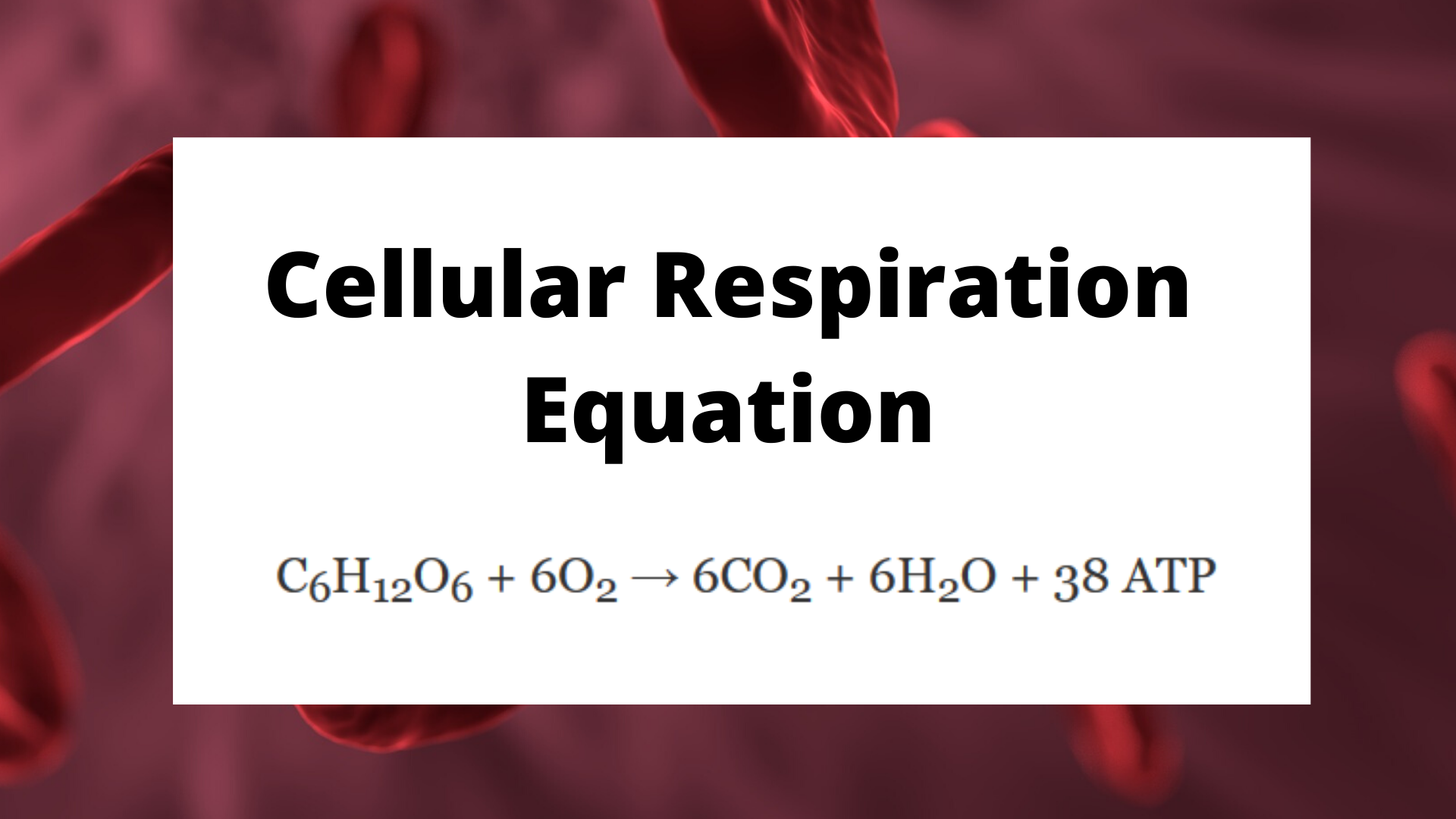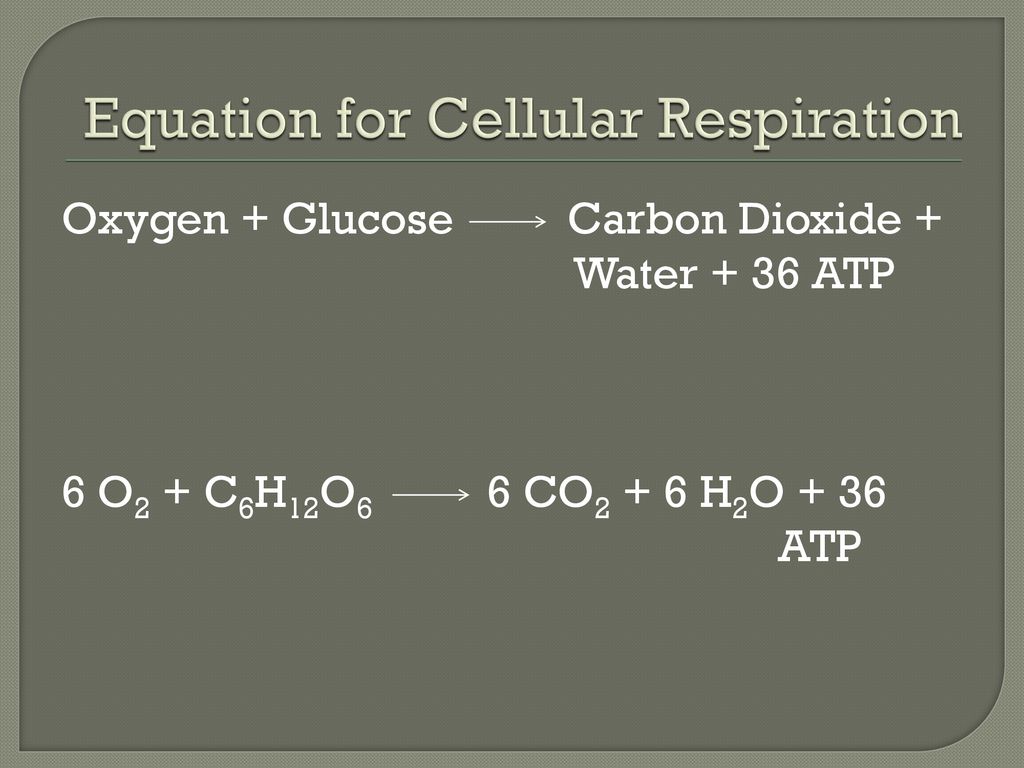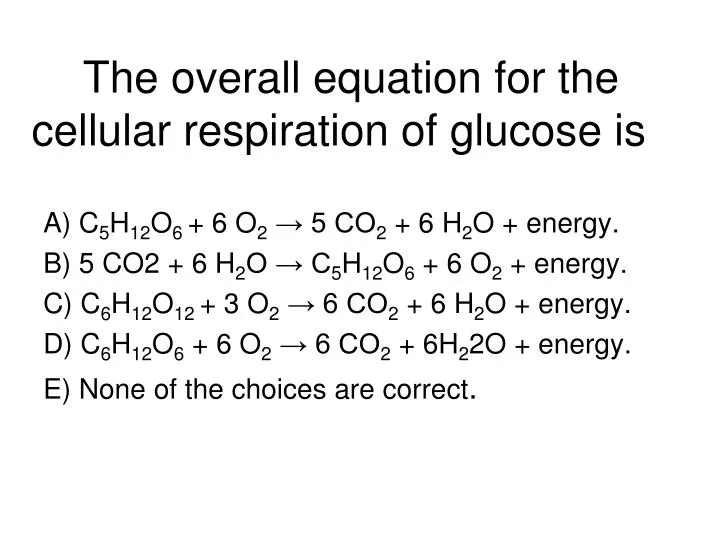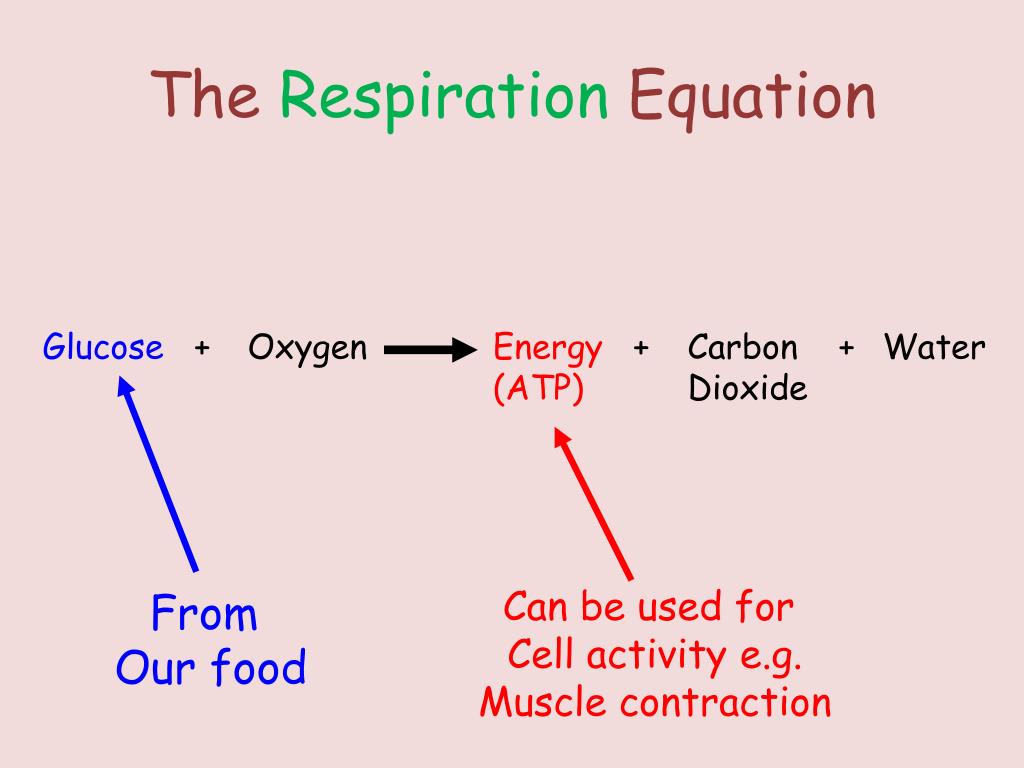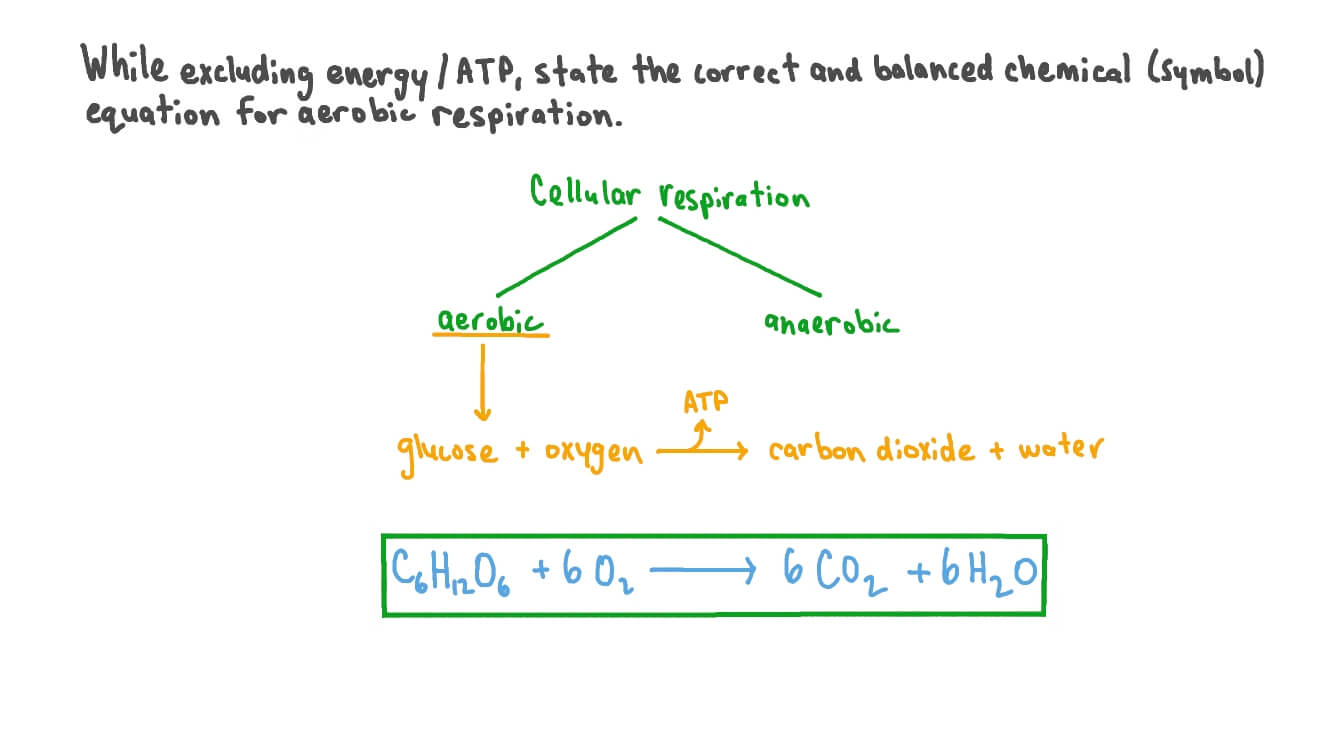What Is The Correct Formula For Cellular Respiration
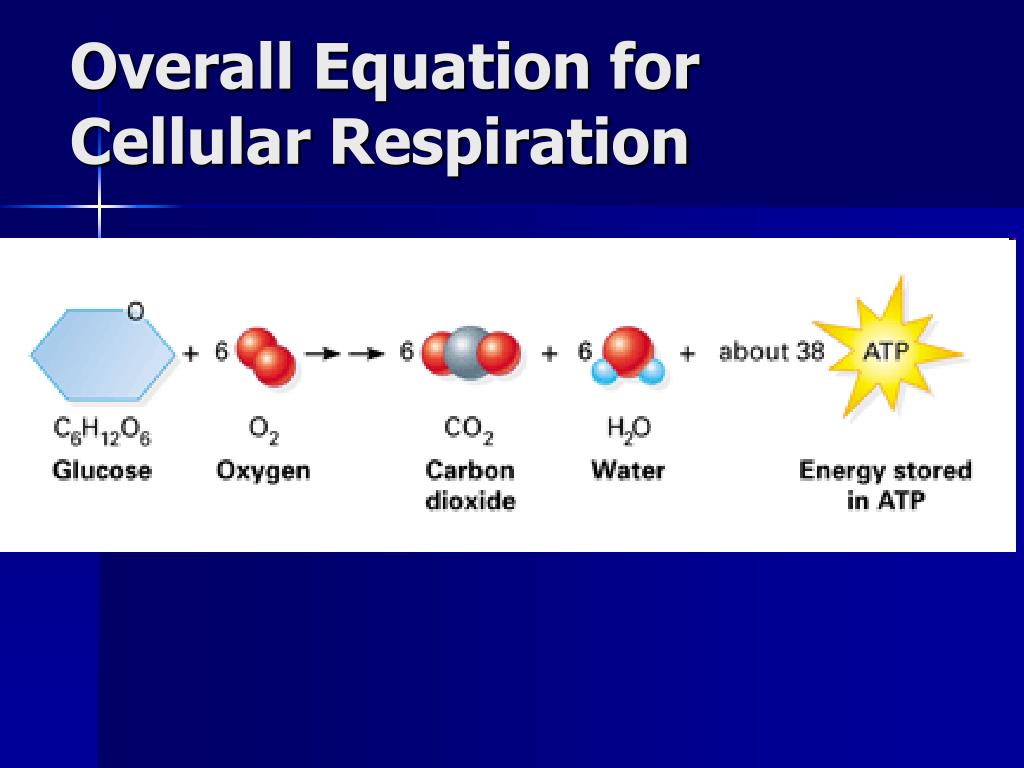
Imagine a crisp autumn morning. Sunlight streams through the vibrant leaves, painting the forest floor in hues of gold and crimson. You take a deep breath, feeling the cool air fill your lungs. But have you ever stopped to think about what happens to that air *inside* you? It's a question that delves into the very heart of life itself: how do we, and almost every living thing on Earth, extract energy from the food we eat and the air we breathe?
At the core of this life-sustaining process lies cellular respiration. This article will explore the formula that represents this fundamental chemical equation, dispelling common misconceptions and highlighting its profound implications for understanding biology.
The Fundamental Equation: A Closer Look
The correct, simplified formula for cellular respiration is: C6H12O6 + 6O2 → 6CO2 + 6H2O + Energy (ATP).
This equation tells a compelling story. It shows how glucose (C6H12O6), a simple sugar, reacts with oxygen (O2) to produce carbon dioxide (CO2), water (H2O), and energy in the form of ATP. This reaction is, in essence, the powerhouse behind nearly all life on Earth.
Breaking Down the Components
Let's dissect each component of the equation.
Glucose, often considered the primary fuel for cellular respiration, represents the carbohydrates we consume through our diet. Oxygen, inhaled from the air, acts as the crucial oxidizing agent, facilitating the breakdown of glucose.
Carbon dioxide, a waste product of the process, is exhaled. Water, another byproduct, is essential for various bodily functions. The most vital product, ATP (Adenosine Triphosphate), is the energy currency of the cell.
Why ATP Matters
ATP is the molecule that directly powers cellular activities. From muscle contractions to nerve impulses and protein synthesis, virtually every process within a cell relies on the energy released by ATP's breakdown.
Without ATP, life as we know it would cease to exist. This is why understanding cellular respiration, and its efficient production of ATP, is so crucial.
The Journey: A Multi-Step Process
While the equation is simple, the actual process of cellular respiration is remarkably complex, involving numerous steps and enzymes.
The process can be divided into three main stages: Glycolysis, the Krebs Cycle (also known as the Citric Acid Cycle), and the Electron Transport Chain.
Glycolysis: The Initial Breakdown
Glycolysis occurs in the cytoplasm, the fluid-filled space within the cell. During Glycolysis glucose is broken down into two molecules of pyruvate, producing a small amount of ATP and NADH.
This is an anaerobic process, meaning it doesn't require oxygen. However, the pyruvate generated during glycolysis becomes the fuel for the next stage, which does require oxygen.
The Krebs Cycle: Extracting More Energy
The Krebs Cycle takes place in the mitochondria, often referred to as the "powerhouse of the cell". In the Krebs Cycle pyruvate is converted into acetyl-CoA, which then enters a series of reactions that release carbon dioxide, ATP, NADH, and FADH2.
The Krebs Cycle further extracts energy from the original glucose molecule, capturing it in the form of electron carriers like NADH and FADH2.
The Electron Transport Chain: The ATP Jackpot
The Electron Transport Chain, also located in the mitochondria, is where the majority of ATP is produced. NADH and FADH2 donate electrons, which are passed along a series of protein complexes.
This electron transfer generates a proton gradient, which is then used to power the synthesis of ATP. Oxygen is the final electron acceptor in the chain, forming water as a byproduct.
Anaerobic Respiration: An Alternative Pathway
While cellular respiration typically relies on oxygen, some organisms (and even our own muscles under strenuous conditions) can utilize anaerobic respiration.
Anaerobic respiration doesn't use oxygen. It typically yields far less ATP than aerobic respiration.
Two common types of anaerobic respiration are lactic acid fermentation and alcohol fermentation. Lactic acid fermentation occurs in muscle cells during intense exercise, while alcohol fermentation is used by yeast to produce ethanol and carbon dioxide.
The Significance of Cellular Respiration
Understanding cellular respiration is fundamental to understanding biology. It explains how organisms obtain energy to fuel their life processes.
From the smallest bacterium to the largest whale, virtually all life depends on this remarkable process. Studying cellular respiration provides insights into metabolic disorders, disease mechanisms, and even the evolution of life itself.
It's also relevant in various fields such as medicine, sports science and agriculture.
Common Misconceptions
There are some common misconceptions about cellular respiration that are worth clarifying.
One frequent misconception is that cellular respiration is simply the reverse of photosynthesis. While the overall equations might appear to be opposites, the processes are distinct and involve different pathways and enzymes.
Another misconception is that only animals undergo cellular respiration. In reality, plants also respire, using the glucose they produce during photosynthesis to generate ATP.
The Future of Respiration Research
Research continues to unravel the intricacies of cellular respiration.
Scientists are exploring ways to manipulate cellular respiration to treat diseases like cancer. They are also investigating the potential of artificial photosynthesis to create sustainable energy sources.
By understanding the fundamental processes of life, we can unlock new possibilities for improving human health and creating a more sustainable future.
Conclusion: A Breath of Perspective
The formula for cellular respiration, C6H12O6 + 6O2 → 6CO2 + 6H2O + Energy (ATP), represents a process that is both elegantly simple and profoundly complex. It's a reminder of the interconnectedness of life and the intricate mechanisms that sustain us.
The next time you take a deep breath, remember the incredible journey that oxygen undertakes within your cells, fueling your every thought, movement, and breath. It's a process worth appreciating, a testament to the power and beauty of biology.
It highlights how glucose and oxygen work together to provide our bodies the energy it needs.
